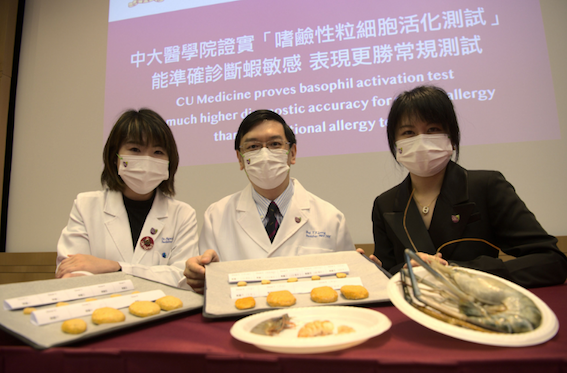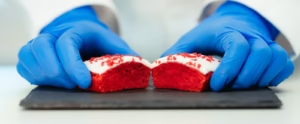Thursday, 22 January 2026
Hong Kong explores basophil activation test for shrimp allergy
Shellfish is one of the most common food allergies, with shrimp being the most frequent offender causing anaphylaxis in both children and adults Shrimp allergy is the most common food…

Shellfish is one of the most common food allergies, with shrimp being the most frequent offender causing anaphylaxis in both children and adults
Shrimp allergy is the most common food allergy in Hong Kong. In addition to skin reactions and oral symptoms, it can lead to anaphylaxis. The conventional diagnostic approaches include the use of shrimp extracts for skin prick test and measurement of the blood level of shrimp-specific IgE antibody.
However, these methods are not accurate, and with many patients have been misdiagnosed as shrimp-allergic. There is thus an unmet need to design a reliable diagnostic method for shrimp allergy.
To address this problem, The Chinese University of Hong Kong’s (CUHK) Faculty of Medicine at (CU Medicine) has conducted a study to identify a more accurate test for shrimp allergy diagnosis.
The results proved that the basophil activation test (BAT) on individual blood samples showed a sensitivity and specificity of 87% and 94% respectively, which were much superior to those of the conventional methods such as the skin prick test and specific IgE measurement.
The study also proved that tropomyosin, the most important shrimp allergen in the Western population, is not the most appropriate diagnostic biomarker in the Southern Chinese population. Instead, the research team has identified three new shrimp allergens from the giant tiger prawn that are more common and important among patients residing in Southern China.
Technology
Jollibee Group inaugurates VisMin Commissary in Philippines to support regional expansion
Jan 22, 2026 | Company News
Australia wine recovery program extended to 2027 with $3.1Mn federal funding
Jan 22, 2026 | Australia
TAGAT Foodtech launches integrated digital ecosystem for animal protein supply chain
Jan 20, 2026 | Company News
Food Testing
NSF launches retail food safety audit program in ASEAN and Australia
Jan 19, 2026 | Australia
Bringing PFAS testing to the point of need
Jan 16, 2026 | Australia
IMCD opens a Food & Nutrition Laboratory in Cologne
Jan 08, 2026 | Company News
More Popular
Jollibee Group inaugurates VisMin Commissary in Philippines to support regional expansion
Jan 22, 2026 | Company News
French Competition Authority clears Greenyard–Eureden joint venture and cooperative merger
Jan 22, 2026 | Company News
Tropical Cheese acquires Cibao Meat Products
Jan 22, 2026 | Company News






